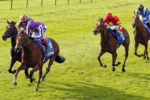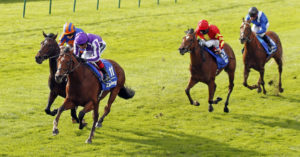If the road to hell is paved with good intentions, the road to heaven can be strewn with hidden potholes. One of them was responsible for bursting a bubble that had connections of Snow Lantern dreaming of a second coming.
Snow Lantern went to York’s Dante meeting having bypassed the 1,000 Guineas. She started at odds-on to win a Listed race over a mile but was undone from the moment she left the stalls. The grey daughter of Frankel who had floated to post without a care in the world was now a bundle of pent-up energy. Having pulled hard to halfway, it was all she could do to hold on to third place.
It wasn’t the scripted outcome that would have seen her advance on Royal Ascot for the Coronation Stakes, a race won impressively by her dam, Sky Lantern, eight years ago. But then, racing rarely follows the script. And the dream remains alive even if Snow Lantern still has much to learn.
There is no rush, given that the Keswick family, who own and bred Snow Lantern, would like her to race as a four-year-old. She is more of a long-term project than her illustrious dam, who won the Moyglare Stud Stakes as a juvenile. And without wishing to sound churlish, it would almost have been too much of a blessing had Snow Lantern followed seamlessly in her mother’s path. Breeding top-class racehorses was never supposed to be that easy.
As much is implicit in the words of Ben Keswick, 48, whose unfolding love for the sport prompted him and his family to buy their first broodmares in 2008. “As with so many things there are highs and lows,” he says, “but the highs can make very special moments when they are shared with family members and friends. These are priceless.”
“The family has always had an interest in racing but that has grown massively over the last ten to 15 years”
When Keswick started thinking about breeding horses he sought his father’s counsel. Simon Keswick was enamoured by the prospect and Rockcliffe Stud was born. The stud takes its name from the eponymous house which Simon and his wife, Emma, bought in 1981. They also acquired some surrounding farmland, part of which was made over to grazing pasture.
Rockcliffe Stud is now home to nine mares and their assorted progeny, which are enchanting the Keswicks. Simon is a frequent visitor, sometimes with Emma.
The sole lament of Sophie Woolf, the stud groom, is that Ben’s working life in Hong Kong renders him unable to spend more time around the farm. His movements have been further restricted by Covid.
There is compensation of sorts in the modern age. “I make videos with a little commentary on the foals and yearlings, which are sent to Ben every month,” Woolf says. “I do the same when our yearlings go to the sales so that Ben can feel as involved as possible. It’s important to us that he has as much input as he can.”
Ben is married to Martha, a daughter of Jeremy Hindley, who trained successfully in Newmarket for 17 years. He is a fifth-generation member of the Scottish family that has shaped Jardine Matheson, the multinational business conglomerate synonymous with the Far East, since the company’s inception nearly two centuries ago.
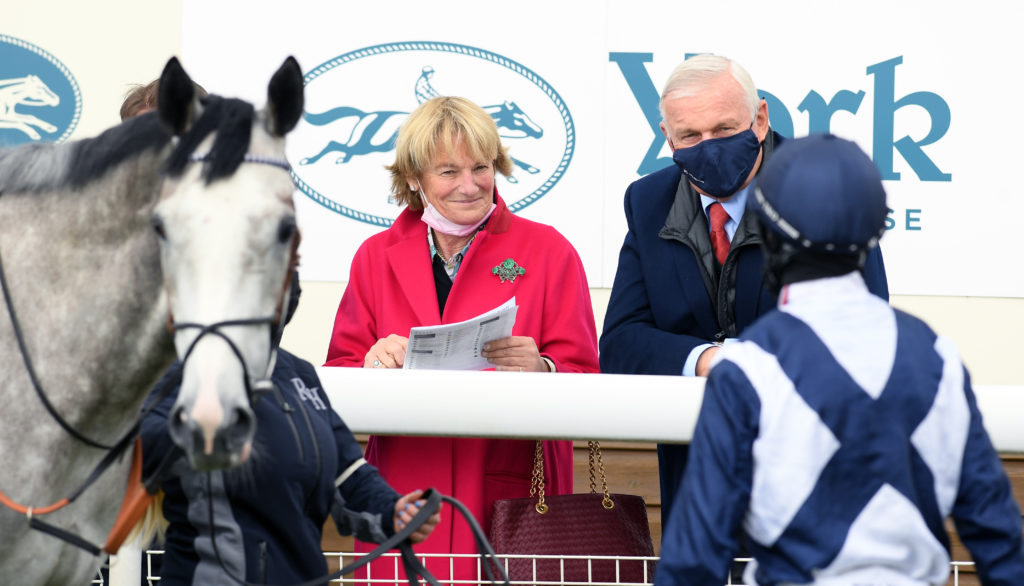
The Keswicks look into the parade ring ahead of Snow Lantern’s run at York – Photo: Bill Selwyn
Ben is Jardines’ executive chairman, and the model around which Rockcliffe operates bears a business fingerprint. All the yearling colts are offered at public auction while the fillies are raced before the best of them return to Rockcliffe. “Being semi-commercial by selling the yearling colts has been a useful discipline to keep us focused on our aim,” Ben says.
The Keswicks are an unremittingly private family whose close links to Asia are reflected in some of their horses’ names. Sky Lantern’s second foal, a Dubawi colt that did not make his sales reserve, was called Noonday Gun after the naval artillery piece mounted outside Jardine House on Hong Kong island. It is fired every day at noon and has become a popular tourist attraction.
Another tourist attraction is Rockcliffe Garden within the family home in Gloucestershire, where a dovecote vies for attention with topiary, yew hedges, lilies and lavender. The garden is Emma’s work, and her love of horticulture is manifest in the naming of a pair of black-type- winning half-sisters, Marsh Hawk and Hairy Rocket.
The two fillies are out of Asaawir, one of three foundation mares bought for the Keswicks in 2008 by Ed Sackville, whom the Keswicks retain as their bloodstock advisor. It was Sackville who bought Sky Lantern as a yearling for €75,000 at Goffs in 2011.
“Ben is hugely involved with the stud,” Sackville says. “The family has always had an interest in racing but that has grown massively over the last ten to 15 years. That tends to happen when an enthusiast enjoys some success.”
“Being semi-commercial by selling the yearling colts has been a useful discipline”
The initial missive at Rockville centred on breeding fast horses. Marsh Hawk and Hairy Rocket, who was sold at the end of her two-year-old season, are by Invincible Spirit and Pivotal respectively. Sky Lantern is by another sprinter in Red Clubs. An added attraction was that she is a complete outcross for any Northern Dancer-line stallion.
Sky Lantern is out of Shawanni, a daughter of Negligent, herself winner of the Rockfel Stakes as a two-year-old who also ran third in the 1,000 Guineas. Sky Lantern had no difficulty staying a mile, although at one point Sackville’s brief to ply speed genes seemed to have gone awry when Sky Lantern finished a running-on second in the Nell Gwyn Stakes under Richard Hughes.
“Hughsie came back in and said Sky Lantern might make up into an Oaks filly,” Sackville recalls with a hint of incredulity in his voice. “And I was supposed to have bought a sprinter…”
In the end Sky Lantern ran once over a mile and a quarter in the Nassau Stakes, which proved inconclusive. She encountered severe traffic problems before finishing fifth, but her sterling deeds – she won four Group 1 races – must have encouraged the Keswicks to broaden the speed remit.
“We have a more open mind now,” Sackville says. “We are trying to produce top-class horses, which is why we are sending our mares to the likes of Dubawi, Frankel, Kingman, Lope De Vega and Siyouni.
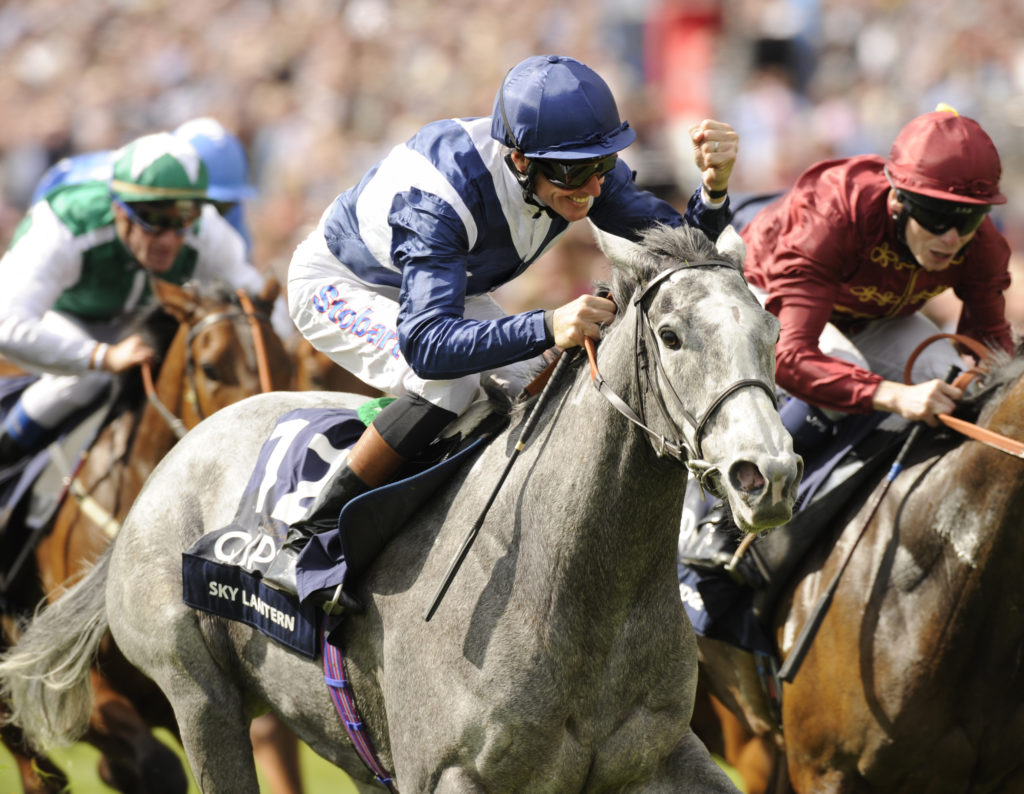
Sky Lantern winning the 1,000 Guineas – Photo: Bill Selwyn
“I did a research project on winners of the big sprints,” he continued. “What it showed was that Classic horses tend to come from strong female families, whereas top-class sprinters generally don’t. It’s more their physical shape that makes them fast.”
The Keswicks’ use of Europe’s foremost sires underlines their desire to play at the top table. And there is another spinoff. “Camilla Trotter has helped us with mating plans in the last few years,” Sackville says. “She comes up with incredibly good suggestions, citing crosses that have worked well, but we also have to bear in mind that any colts will be sold as yearlings. It becomes a hard sell if those colts are by less-than-fashionable sires.”
The point was made by Sky Lantern’s first foal in 2016, a colt by Dubawi which was sold to the Coolmore partners as a yearling for two million guineas in 2017. Such returns help to pay for a lot of disappointments.
Inevitably, disappointments there have been. Two of the three mares the Keswicks bought on their initial foray 13 years ago are no longer on the stud. “They were producing perfectly decent, 80-rated horses,” Sackville says. “But we are trying to breed to a higher standard.”
Then there was the Fastnet Rock mare Lone Rock, a Group 1-winning sprinter in Australia who was bought and shipped over to Britain. Ben Keswick had seen how well Australian-bred horses fare in Hong Kong and wanted to explore the possibilities.
“We are trying to produce top-class horses, which is why we are sending our mares to the likes of Dubawi, Frankel, Kingman, Lope De Vega and Siyouni”
“Lone Rock was galloping around the paddock when she suddenly fractured her pelvis,” Sackville relates. “She ruptured an artery in the process and was dead within five seconds.”
The antidote to Lone Rock’s tragic fate is that she had already bequeathed the Keswicks a filly, Raincall, who is now at Rockcliffe. By Pivotal, Raincall won twice from Henry Candy’s stable in 2019. She bequeathed her first foal by Kodiac earlier this year before she visited Mehmas.
“Raincall certainly isn’t the prettiest but I hope she works out as a broodmare because she is Simon’s absolute pride and joy,” Sackville says. “Her first foal is much better looking, so I’m slightly eating my words already.”
There is much to anticipate in the coming years. Seven of the stud’s nine mares are young, and the Keswicks are not averse to supplementing their homebreds with further purchases. They see 12 mares as their optimum number, although there is plenty of room for expansion at Rockcliffe.
Woolf, who heads a staff of four, started at Rockcliffe in 2015. She’d spent 15 years working at Rushbrooke Stud until its proprietor, Anita Wigan, sold the property. She says she has landed on her feet and thrives in her role. She gets just as animated as her employers when one of the stud’s products is due to run.
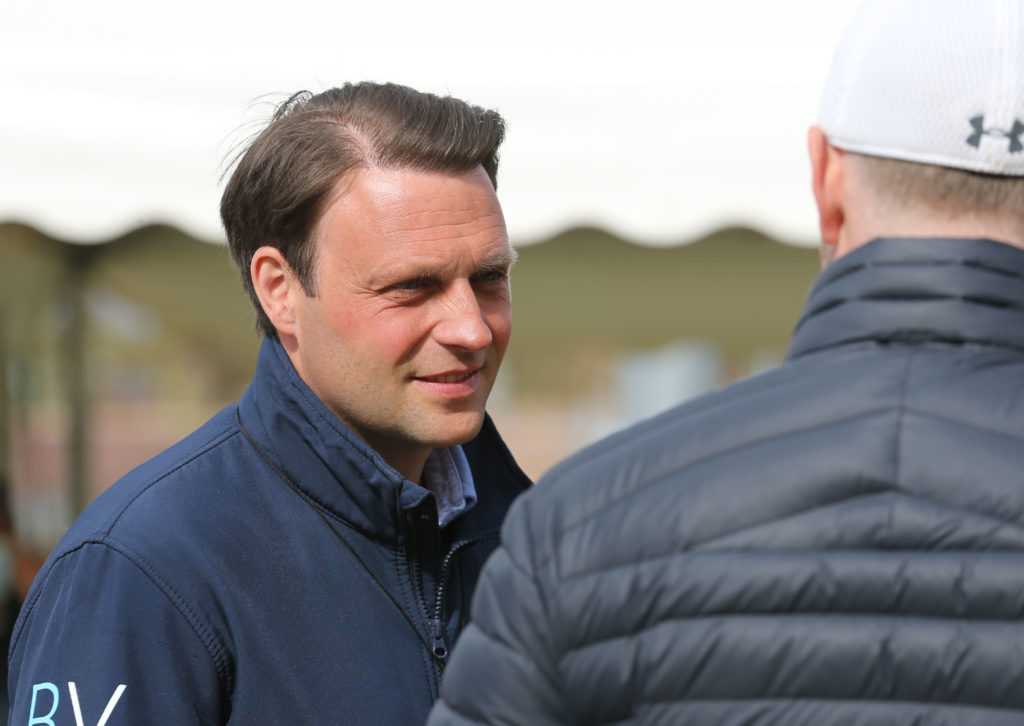
Ed Sackville: the stud’s advisor purchased Sky Lantern as a yearling – Photo: Tattersalls
“It all makes sense when you watch the horses that were born and raised here,” Woolf says. “I’m a bit of an addict for Flat racing. The Keswicks farm sheep here as well, so when we have a runner all the workers get together to watch it.”
Woolf timed her arrival at Rockcliffe perfectly: the first foaling she oversaw was also Sky Lantern’s first. Snow Lantern is the only filly yet from her mother, who has a two-year-old colt by Galileo, followed by a pair of colts by Kingman. She has returned to Frankel this year.
“It’s quite special for me to have foaled all of Sky Lantern’s progeny,” Woolf says. “Snow Lantern is straightforward, although like Sky Lantern, she has a side to her. I can’t tell you how much like her mother she is, in the way she looks at you. There’s just a little something about her, which we think is an encouraging sign.”
Such signs, together with a healthy respect for lady luck, are portents frequently entertained by many who breed horses. The Keswicks are no different. When Sky Lantern made her debut, Richard Hannon senior brought the Rockcliffe silks to Goodwood rather than those of Ben Keswick, in whose name she was due to run. But when Sky Lantern obliged the silks were deemed lucky. She continued to run in colours depicting a saltire in a nod to the family’s Scottish heritage.
“Our aim is to be a respected small stud that produces good quality stock and black-type winners”
Like his father before him, Hannon enjoys an excellent relationship with the stud and trains the vast majority of the Keswicks’ horses. Together they have succeeded in putting healthy doses of black type into several fillies, which is the benchmark for Rockcliffe.
“Our aim is to be a respected small stud that produces good quality stock and black-type winners,” Ben Keswick says. “I am not sure we have thought much beyond that, but I suppose like everyone else in the game the dream of dreams is to produce a Group 1 winner – although we never dare utter it.”
Those who can afford to play at the highest level seriously compromise their chances of success if they compromise on quality. It’s a lesson the Keswicks have absorbed; the way to keep costs down is to adhere to budgets, sell the colts and maintain tight controls on the broodmare band.
The Keswicks are now well positioned to harvest the fruits. Snow Lantern may have come up short at York but few would dispute the suggestion that her ascent to the ranks of Pattern winners is only a matter of time.
What would that mean to the Keswicks? “I suppose at the end of the day we owe it all to Sky Lantern because without her none of this would have happened,” adds Ben Keswick. “So to have multi-generational success – now that would put the icing on the cake.”


